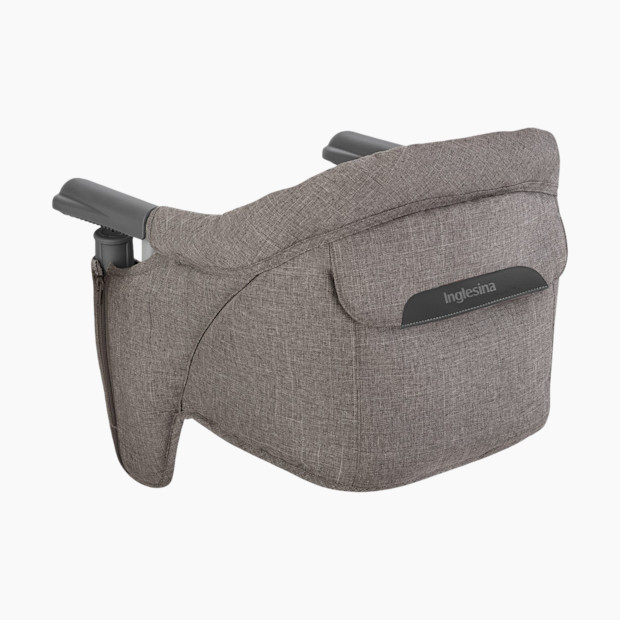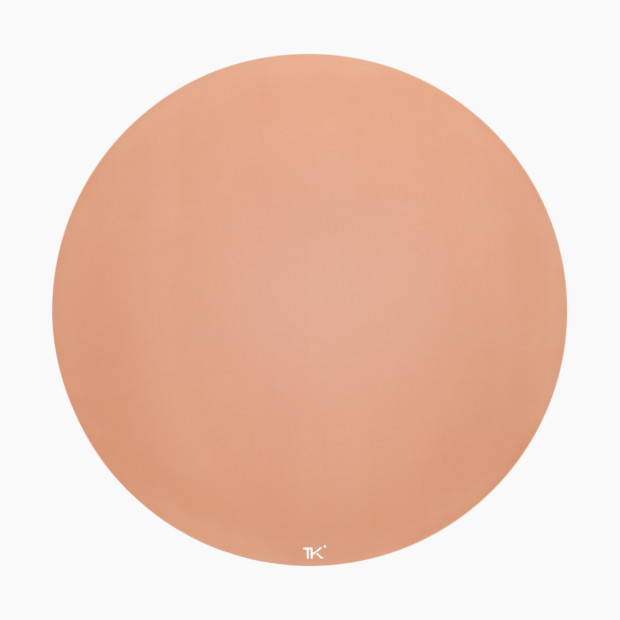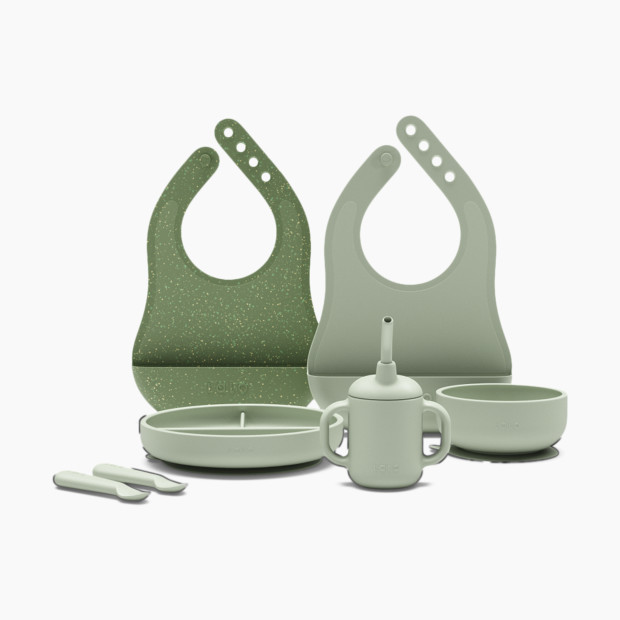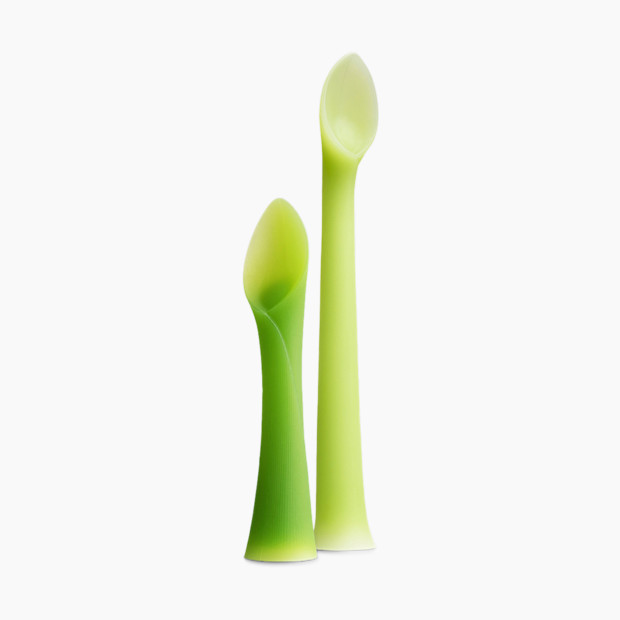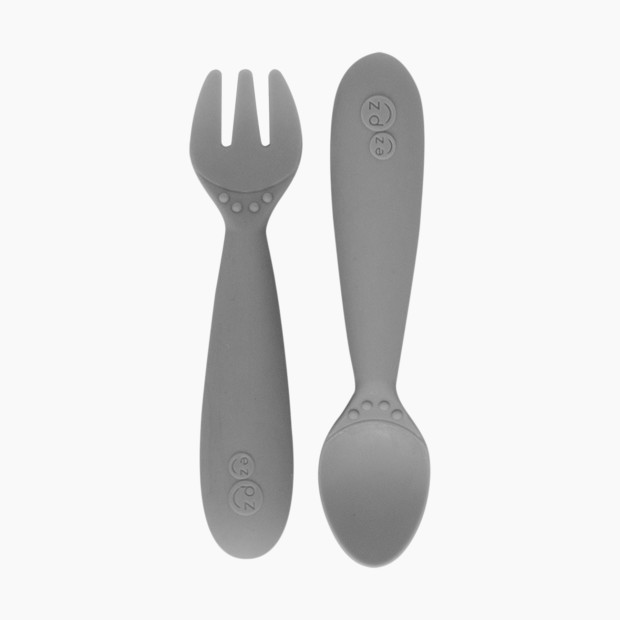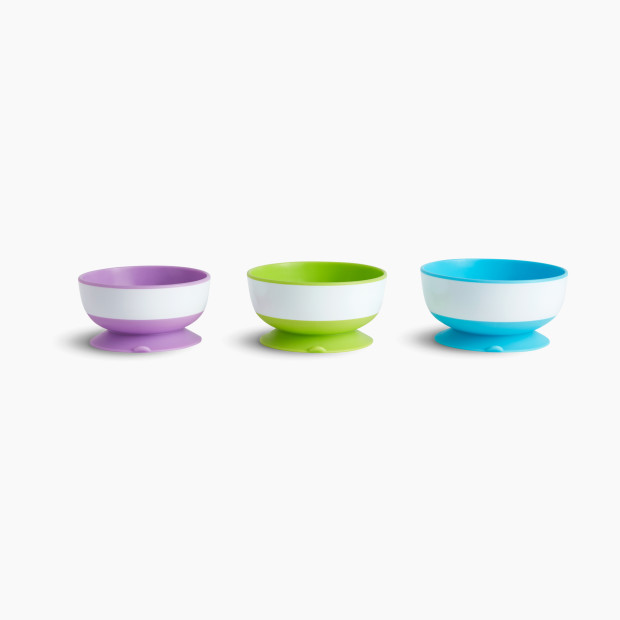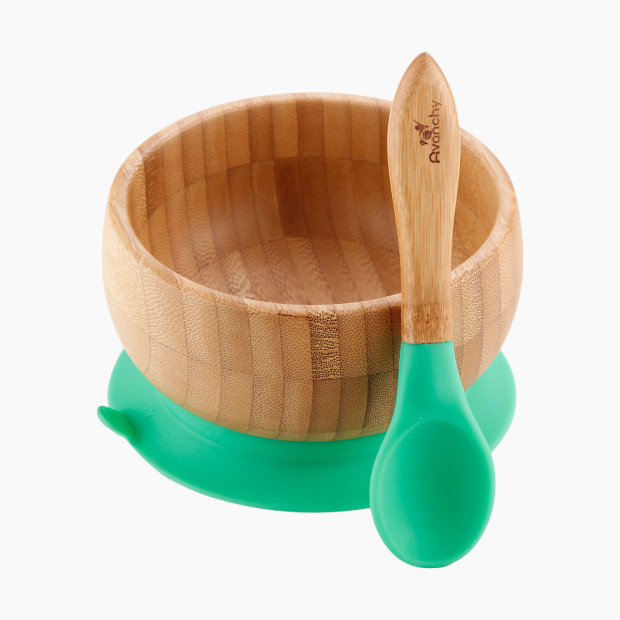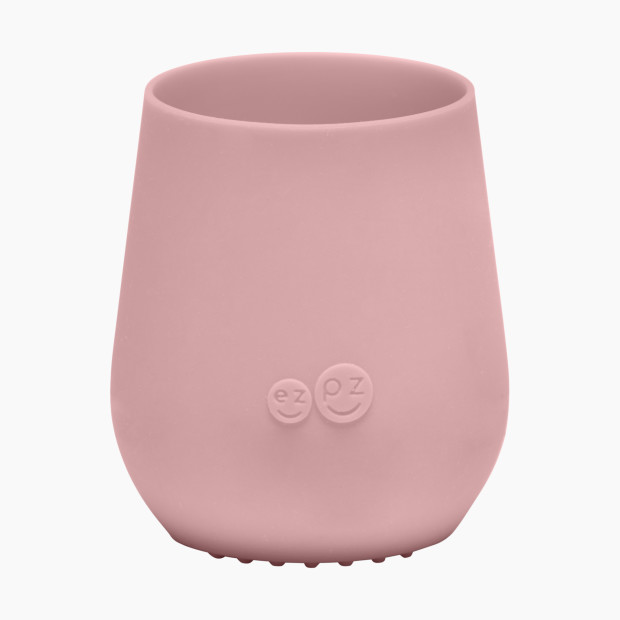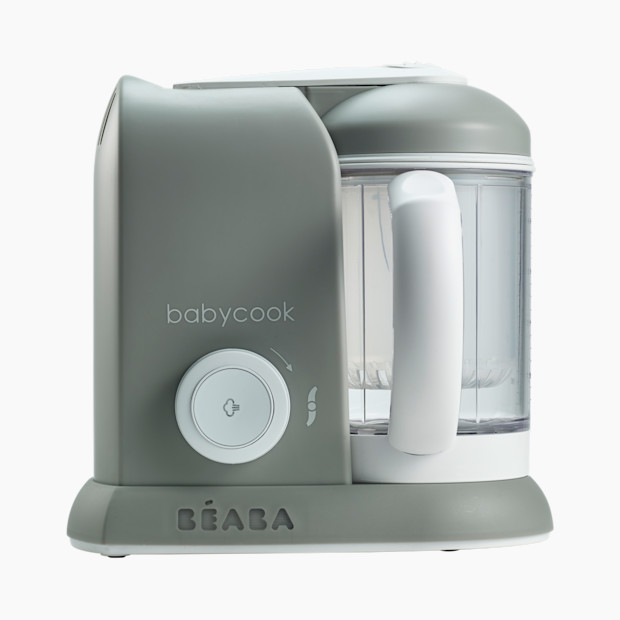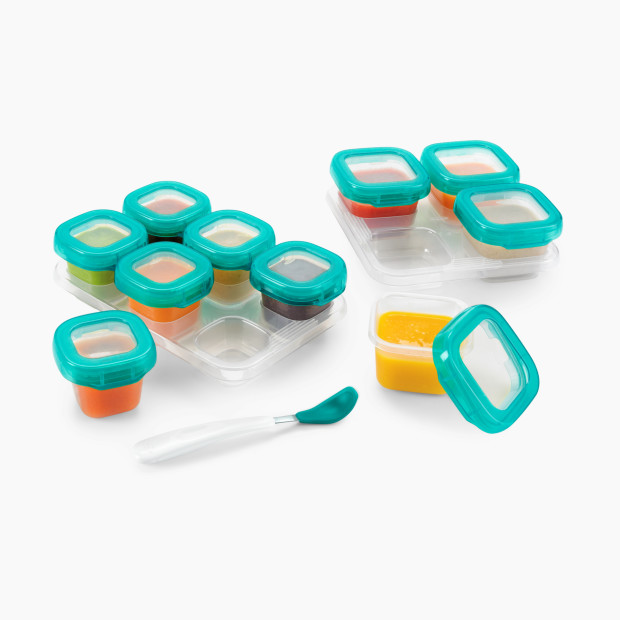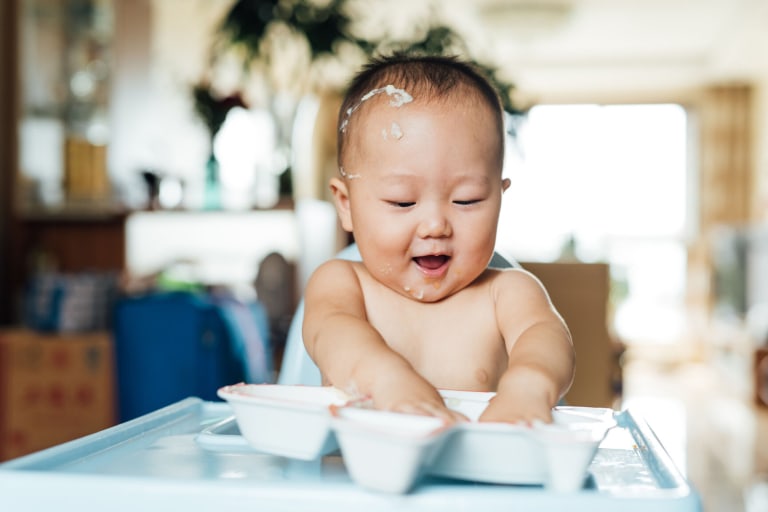
Everything You Need to Start Solid Food with Baby
The good, the bad and the messy.
By Babylist Team
It may be tough to imagine when your little one arrives, but starting solids with your baby is going to happen faster than you may think. It’s probably one of the most fun milestones over baby’s first year (and one of the messiest!)—but there’s a lot to think about too.
From knowing when babies can start eating solids to figuring out the best first foods, high chair, spoon and more, it’s easy to get overloaded with information and bogged down by all the decisions. We’re answering some of the most common questions when it comes to starting solids with your baby and helping you figure out the best gear to get, what to skip and why.
Common Questions on Starting Solids
Confused on what the right time is to start solids with your little one? Don’t know baby-led weaning from pouches and purees? Here are the answers to some of the most frequently asked questions around starting solids with your baby.
When can babies eat solid food?
According to the American Academy of Pediatrics (AAP), breast milk or formula should be the sole source of nutrition for your baby for the first six months, and once you introduce solids, it should be the primary source of nutrition until they turn one. While each baby will grow and develop at their own rate, there are a few signs to look for to let you know your little one is ready to start solids. “Most healthy, full-term, typically developing babies are ready to start eating solid food around six months old,” says Jenny Best, founder of Solid Starts, “however, we like to look for developmental signs of readiness as well: whether baby can sit with minimal support; hold their head up strong and steady; reach and grab things bring them to the mouth; and lastly, showing some interest in eating.”
Be sure to check with your pediatrician prior to starting solids to get the go-ahead and talk through any questions or concerns you may have.
What are the best first solid foods for baby?
Baby cereals have traditionally been a common first food for babies—but not anymore. While there’s nothing wrong with baby cereal (it’s a great source of iron, especially for breastfed babies who are at a greater risk of iron deficiency), there’s no medical evidence that introducing solid foods in any particular order has any advantages or disadvantages for your baby. There’s also no evidence that starting with fruits before vegetables will cause your baby to develop a dislike for veggies. Best recommends focusing on “nutrient-dense foods, and in particular, those that offer iron, protein and fat.”
A few tips:
- Be sure to let your little one take the lead, and never force them to eat more than they want.
- Offer purees or check out baby-led weaning for a different approach.
- Always avoid honey (raw or cooked) for babies under age one, as well as cow’s milk on its own—although it’s fine to offer milk in other foods such as full-fat yogurt or cottage cheese.
- Get familiar with common choking hazards for babies and toddlers.
When do I introduce allergens to my baby?
According to the AAP, there’s no evidence that waiting to introduce allergens (eggs, dairy, soy, peanuts and fish) beyond four to six months prevents food allergies. In fact, it’s actually the opposite: “there’s a growing body of evidence that the early (and often) exposure to common allergens like eggs and peanut can actually help prevent those food allergies from developing altogether, especially if the child is at risk for food allergies,” says Best. Be sure to talk to your pediatrician before you begin allergenic foods, though, especially if there’s a family history of allergies.
What products do I need to start solids?
Starting solids may feel daunting (didn’t we just figure out breast or bottle feeding?), but there are really only a handful of essential products you need to kick off this exciting new phase:
- A safe place for baby to sit. A high chair, portable high chair or age-appropriate booster seat will all work here.
- Bibs. This one’s pretty self-explanatory.
- Baby-friendly plate, bowl or feeding mat. If your high chair comes with a tray, you may want to skip these in the beginning, but at some point you’ll want to add a few of these items to your list.
- Baby-friendly utensils. Because babies + adult-sized metal forks don’t mix!
Other than these solids must-haves, there are a few other things you may want to add to your shopping list—but they’re definitely optional.
Baby food. They need to eat something, of course! There are plenty of great baby food options you can buy, and if you’re wanting to try your hand at making it yourself, read on. - Baby food maker. If you’re making your own baby food, a steamer, an immersion blender, a food processor or even just a good old fork can help you get the job done, but some parents like the ease and convenience of a baby food maker. - Food storage trays and containers. Trays and containers allow you to store large batches of baby food and take food on the go. - Splash mat. Solids are messy, and mats can be a nice way to protect your floors from constant spills.
The Best Products for Starting Solid Foods with Your Baby
Here’s what we recommend stocking up on before you start your solids journey.
A Safe Seat
A safe spot for baby to sit during mealtime is a must-have. There are high chairs in what feels like countless sizes and styles to choose from, so you’ll need to do a little research first to figure out what works best for your space.
A few of our favorites include the Stokke Tripp Trapp (a classic wooden seat that will take you from baby’s first spoonful long through the big-kid years), the ultra-modern Lalo that converts to a toddler chair and the affordable basic ANTILOP from IKEA.
Short on space? You’ll want to ditch the traditional high chair for a clip-on option like the Inglesina Fast Table Chair. (It’s also great for travel and trips to the grandparents’ house.)
Mess Tamers
Starting solids is a lot of things, but neat isn’t one of them. There are several items worth adding to your list that can help tame the mess.
Stock up on a few types of bibs to figure out what you like best. For wipeable, spill-proof options, we love Bumkins SuperBibs and the silicone option from Lalo.
And although it’s not a must-have, many parents like the convenience of a mat for protecting the floor under their little one’s eating space. The Splat Mat from Bumkins is a great reusable option that can be wiped down and then tossed right into the washing machine when it’s extra icky. For a more neutral, minimalist look, we love this Toddlekind circle mat.
Mind Your Manners
Most babies love to eat with their hands right off of a high chair tray, which is completely normal. (And even encouraged, as it’s a great sensory activity.) But don’t be afraid to also introduce utensils, tableware and a cup to help your little one become familiar with them and practice different self-feeding skills.
Purchasing an intro set with everything you need can be a smart way to start. This one from Lalo comes with a Suction Bowl, Suction Plate, Little Cup, two Little Spoons and two Bibs.
Or you can buy individual first feeding essentials.
The Olababy Training Spoon is great for first-time eaters thanks to its soft, silicone construction and unique shape. If you’re looking for a spoon and fork pack, we like this playful set from EZPZ.
These suction cup bowls from Munchkin are a great stay-in-place option for new eaters. If you prefer a wood option, check out the one from Avanchy.
Feeding mats are a great one-stop serving solution for mealtime, and the Mini Mat from EZPZ is perfectly sized for younger babies. It’s made from silicone and suctions right to the table or high chair tray to prevent spills.
And don’t forget a cup! The Zoli Bot, with its weighted, easy-sip straw, is a good choice for new sippers. If you want to try an open cup option, we like the Tiny Cup from EZPZ.
Good Eats
And now for the fun part—the food!
If you’re planning on whipping up your own creations and are looking for a countertop solution, Beaba’s Babycook is the way to go. It steams, blends, defrosts and reheats food and is easy for even the most inexperienced home chefs to use.
Storage trays are also key to have on hand if you’re making food in large batches or taking it on the go. We love these affordable basics from OXO Tot, and this glass option from Green Sprouts.



